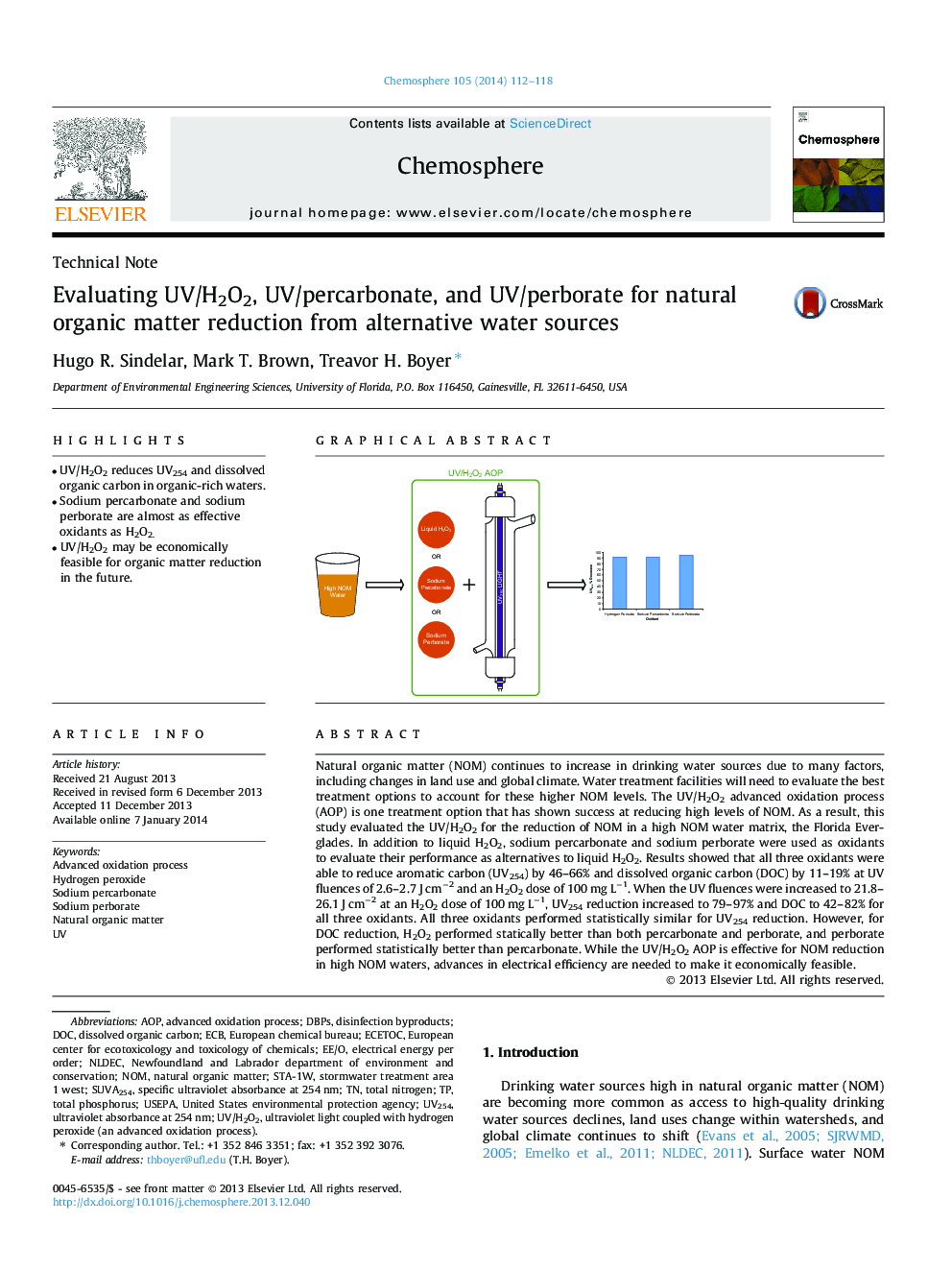| Article ID | Journal | Published Year | Pages | File Type |
|---|---|---|---|---|
| 4408887 | Chemosphere | 2014 | 7 Pages |
•UV/H2O2 reduces UV254 and dissolved organic carbon in organic-rich waters.•Sodium percarbonate and sodium perborate are almost as effective oxidants as H2O2.•UV/H2O2 may be economically feasible for organic matter reduction in the future.
Natural organic matter (NOM) continues to increase in drinking water sources due to many factors, including changes in land use and global climate. Water treatment facilities will need to evaluate the best treatment options to account for these higher NOM levels. The UV/H2O2 advanced oxidation process (AOP) is one treatment option that has shown success at reducing high levels of NOM. As a result, this study evaluated the UV/H2O2 for the reduction of NOM in a high NOM water matrix, the Florida Everglades. In addition to liquid H2O2, sodium percarbonate and sodium perborate were used as oxidants to evaluate their performance as alternatives to liquid H2O2. Results showed that all three oxidants were able to reduce aromatic carbon (UV254) by 46–66% and dissolved organic carbon (DOC) by 11–19% at UV fluences of 2.6–2.7 J cm−2 and an H2O2 dose of 100 mg L−1. When the UV fluences were increased to 21.8–26.1 J cm−2 at an H2O2 dose of 100 mg L−1, UV254 reduction increased to 79–97% and DOC to 42–82% for all three oxidants. All three oxidants performed statistically similar for UV254 reduction. However, for DOC reduction, H2O2 performed statically better than both percarbonate and perborate, and perborate performed statistically better than percarbonate. While the UV/H2O2 AOP is effective for NOM reduction in high NOM waters, advances in electrical efficiency are needed to make it economically feasible.
Graphical abstractFigure optionsDownload full-size imageDownload as PowerPoint slide
